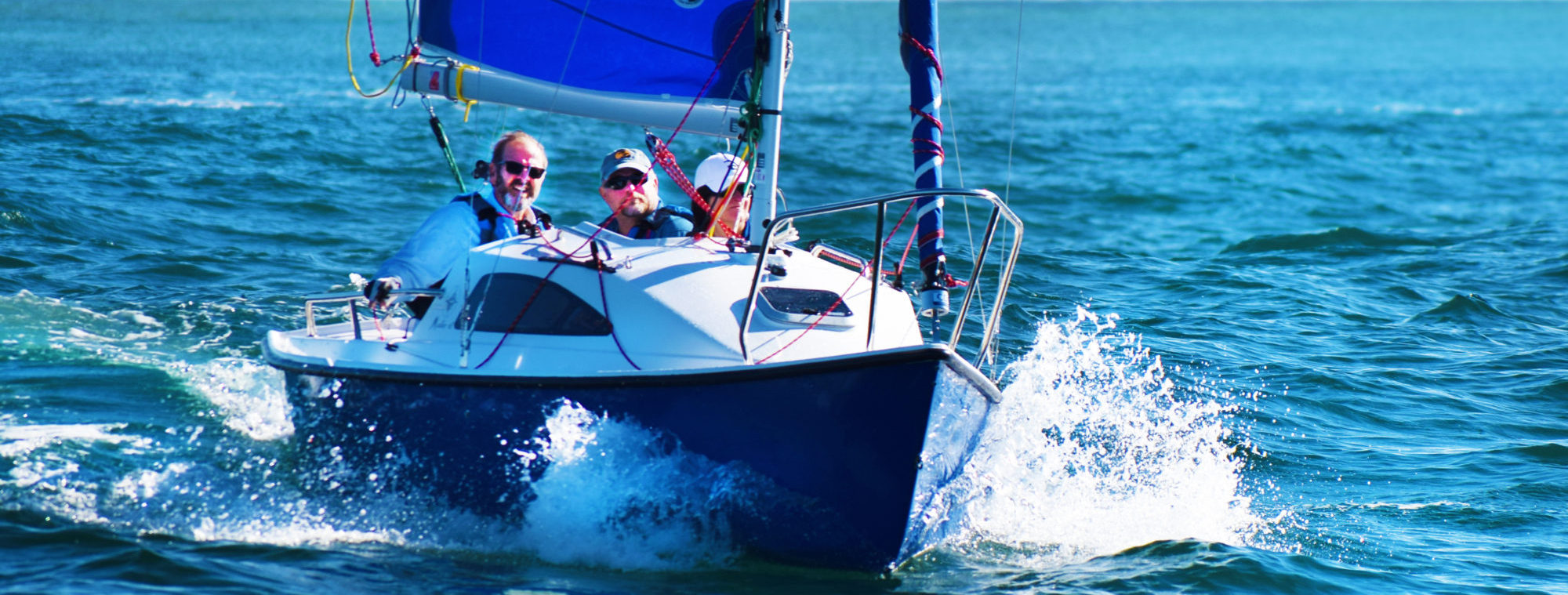What every beginning sailor needs to know:
The process of sailing may look like something that’s fairly effortless but it actually requires an extensive amount of management. Sailboating is a skill that can definitely be learned. In order to master the direction that sails can take you, it’s very important that you start off small. A small but manageable vessel can help you in the process of learning the basics. With enough training, you can control even larger vessels in the future.
Sailing basics for beginners:
There are a number of sailing fundamentals that many beginners start out with during some of their early days out on the water. By mastering some of these basics it’s possible to start building on your knowledge and practicing so that these basics come naturally:
Understanding the physics of sailing:
Being able to picture the physics of the wind on the boat can play a powerful role in sailing. One of the fundamentals of sailing is positioning the sale in the right direction as the wind so that the boat can continually go forward and harness its power. Knowing the way that a sailboat will slide if the wind is not centered in the sail and how to appropriately stabilize a sailing vessel is very important. When you can picture the vessel in your mind as you are sailing along, the fundamentals of sailing become clearer.
The points of a sail:
Being able to recognize the points of a sail and the angle is another element of sailing that you will need to master so that you can harness the full power of the wind. Being able to position the sail correctly according to the points and angle of the sail is a huge aspect of proper navigation and just pointing the vessel where it needs to go.
Safety:
Knowing how to use a life jacket, how to properly anchor the vessel, what to do if there’s a fire and other emergency procedures should always be covered before you go out on the water. Even something as simple as knowing where the radio is could help to save your life in an emergency.
Navigating:
As soon as you learn the basics of maneuvering a sailboat, navigating will also become one of the basic items included in the fundamentals of sailing. As soon as you get away from the shore, utilizing GPS technology or having a method of navigation remains important.
Basic sailing terms:
In order to probably learn how to sail, it’s very likely that you may spend some time in a classroom setting or listening to an experienced captain. Understanding some of the basic sailing terms can make sure that you have a better understanding of the concepts that someone may be trying to explain to you. Here is some of the basic sailing terminology that you might hear during your instruction:
Aft:
This is a piece of sailboat terminology that describes the back of the ship.
The Bow:
This describes the front of the ship.
Starboard:
This is the right-hand side of the boat as you are facing the bow while standing in the boat.
Port:
Port is the left-hand side of the boat while you are facing the bow and standing inside of it.
Windward:
This term refers to the main direction that the wind is blowing and making the windward direction means moving with the wind.
Leeward:
This is the direct opposite of the Windward direction and often given as a guide when a boat is moving into the wind.
Rudder:
This is a mechanism beneath the boat that is usually flat and design that of a strong material. The rudder is connected to a mechanical device on the top of the ship that controls its direction back and forth. Smaller sailboats can control this rudder with a direct mechanism whereas larger sailboats have a full-sized wheel. The rudder directs the vessel by displacing water like a paddle.
Mast:
This is the main component point where the sail is raised.
Boom:
This is the horizontal pole that extends out from the mast for adjusting the direction of the sail.
Tacking:
This is a maneuver that involves turning the bow of the boat into the wind so that it changes from one side of the boat to the other side.
Jibing:
This is an action in which the stern of the boat will go through the wind changing the wind from one side to the other. Whenever a tack or jib occurs the boom will have to shift in order to catch the wind on the new side.
Sailing gear:
What you need to pack every trip.
In order to be comfortable while you are out on the water, it’s important that you pack the right items to go sailing. There are a number of items that you can take with you on the water that can really improve comfort. Whether you are packing up for a lesson or going out in a vessel for the first time with friends here are some items that you won’t want to forget:
A sailor outfit:
The wind will be a factor in any type of sailing vessel. Having the right water and windproof outfit will help to make sure that you can stay comfortable all day. A sailing outfit covers exposed skin while you are out on the water. This can help by stopping a nasty sunburn from occurring. Make sure that you pick out a comfortable sailor outfit that consists of a windbreaker and waterproof pants. A life jacket is also generally an excellent idea as part of your sailor outfit.
Sailing shoes:
Specific nonslip sailing shoes are a fantastic idea out on the water. There is always a chance that you may have to act quickly especially in high winds. It’s important to have the right shoes on so that you can move quickly across the sailing vessel. This will help keep you from tripping or getting hit by some of the rigging in a high wind situation.
Sailing shorts:
These shorts are actually a set of pants that can zip off and are extremely helpful. Sailing shorts are a great idea on the warmer days. They can also serve swim trunks as well if you wanted to take a dip off the boat.
Sailing gloves:
Until you get more experienced with knots and handling a sailing vessel, it’s a good idea to wear gloves. Rope burn can be quite serious especially if the winds pick up suddenly. When you are handling any of the rigging, wearing specialty gloves could help to save your hands from injury.
Where can a beginner learn to sail?
Learning how to sail could be a skill that you can take with you for your lifetime. The process of learning how to sail is usually best done with someone that has been doing it for years. To receive your basic sailing instructions there are some great ways to proceed:
Sailing School:
A classroom setting and learning the basic fundamentals of sailing before you go out on the water is a great way to learn the basics of sailing. You get the chance to try out a number of things on the water under safe conditions while learning all of the applicable terms you may need to know. Sailing school is one of the safest ways that you can learn to sail and from experienced instructors.
Book one-on-one lessons:
if you would rather learn how to sail a smaller boat, taking one-on-one lessons is usually a much better option. An experienced captain can provide you with the expertise that you need to eventually sail a smaller boat on your own. These types of lessons often take place over many appointments. But can be one of the best ways that you will feel extremely safe out on the water.
Basic instructions from a friend:
If you would rather learn from someone you know, it’s possible to go out and sail with a friend or a family member. Doing this could allow you to pick up some of the basics of sailing comfortably without pressure.
Volunteering with a crew:
Larger sailing vessels often require many people to keep them up and running. Putting a classified ad out and volunteering with a crew on a larger boat could teach you all the basic sailing instructions that you need to use a sailboat in exchange for help in running the sailboat over the day or chartered journey.
Learning the process of sailing can be a skill that can stay with you for life. Sailing is a popular pastime and mastering the process of sailing early on could allow you to try out several different vessels like small catamarans, raising goats and even large sailing yachts. Taking lessons is usually one of the best places to get started when sailing for the first time. With enough time and effort, you can become an experienced sailboating professional, and feel far more at ease knowing that you will never be stranded due to a lack of control or knowledge.


